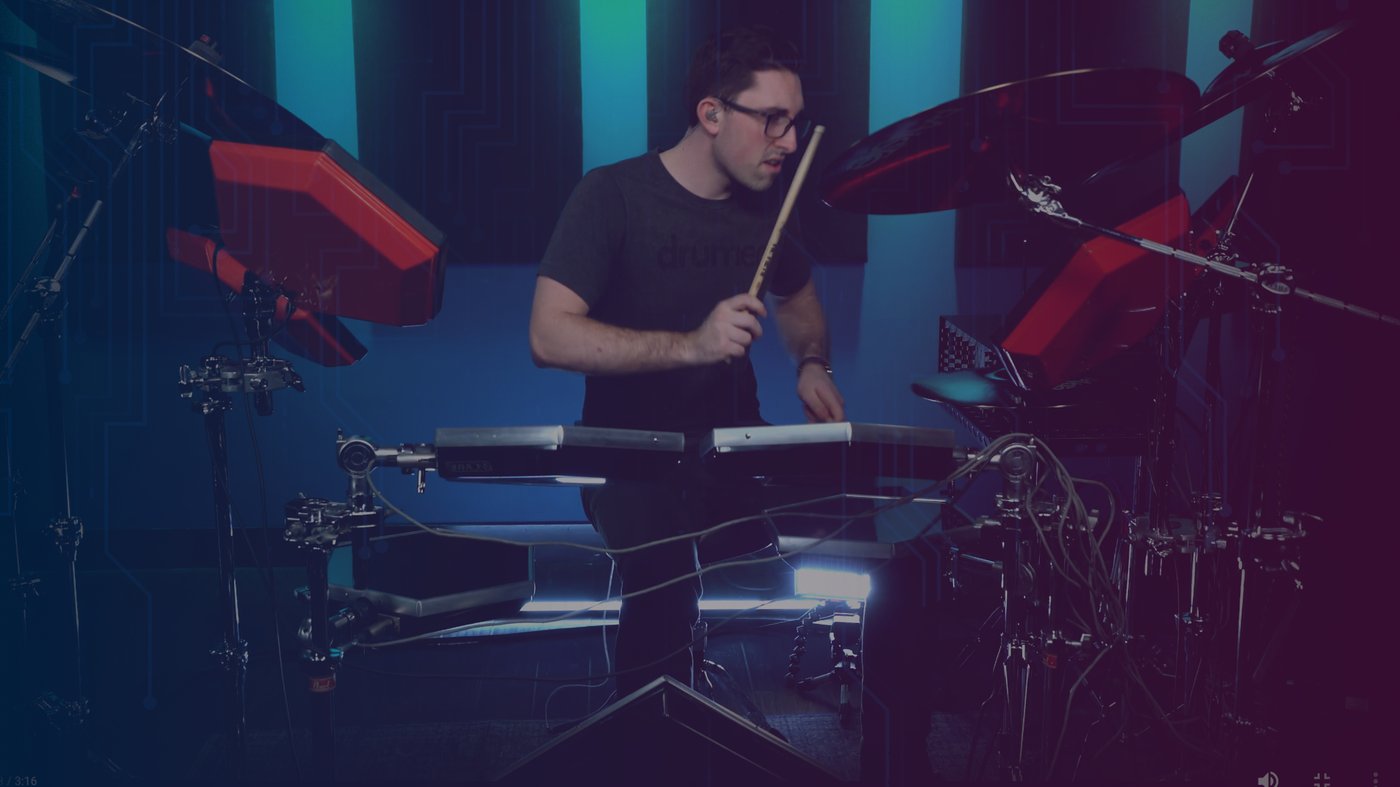
How did electronic drums become a ‘thing’? Did someone invent them in their basement? Did a fairy drum-mother float down from the sky to bless us all with a kit we could use for quiet home practice, out-of-the-box effects and pre-EQed studio sounds?
You used to only be able to get rhythmic drum samples by playing a keyboard or pushing buttons on a synthesizer – not by striking a surface with a drumstick. That’s where the real magic happened.
It took nearly 50 years of innovation to get to where electronic drums are today: not just an alternative to acoustic kits, but an incredible instrument in itself.
If you enjoy this video, you can find the rest of the series available to Drumeo members (click here to try Drumeo for 7 days for free!)
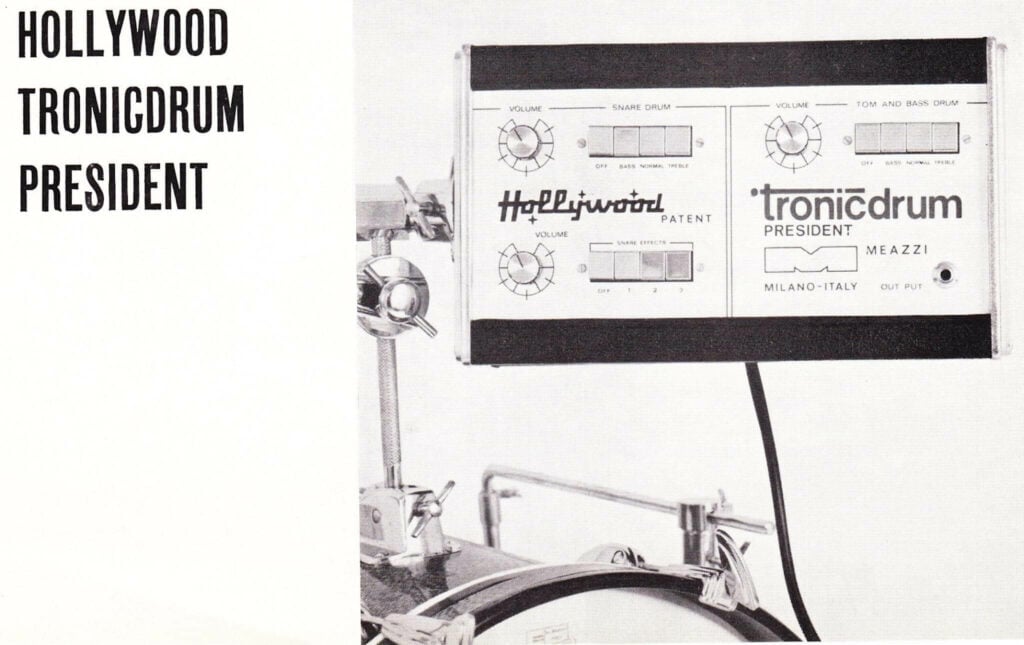
In 1968, Italian drum company Hollywood Meazzi launched the first line of electro-acoustic drums under the name Tronicdrum. At the time, they sold for $1300 USD – equivalent to about $9700 today!
(That money could buy you several kits these days.)
Hollywood Meazzi released two models: the Tronicdrum President (with a module mounted over the bass drum) and the Tronicdrum Golden (with a module built into the bass drum itself).
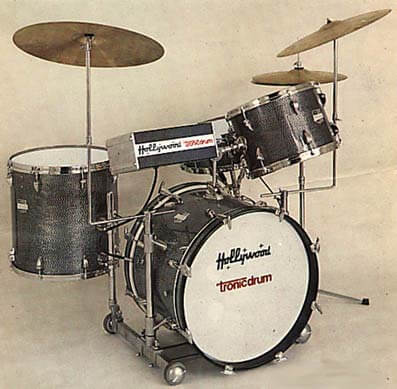
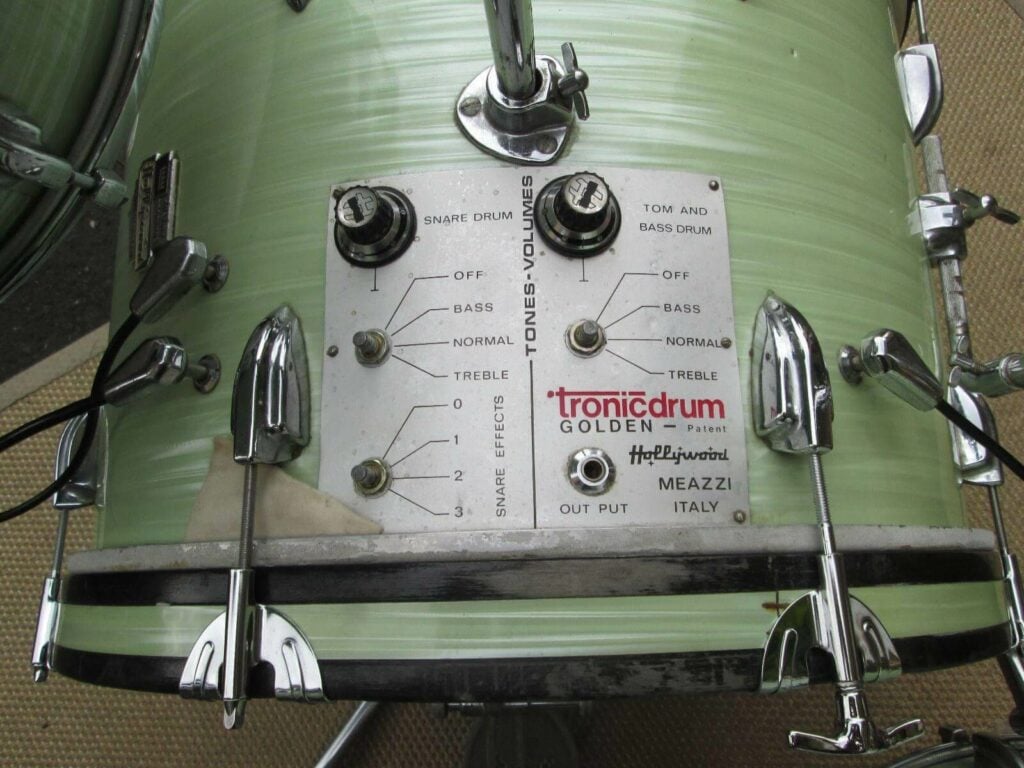
Aside from the hi-hat stand, the entire drum set was mounted on wheels, making it easy to roll on and off stage for performances.
Each drum had a pickup inside of it, with the snare drum including a microphone that pointed downwards. The bass drum and toms are controlled by the same part of the module, while the snare is triggered separately.
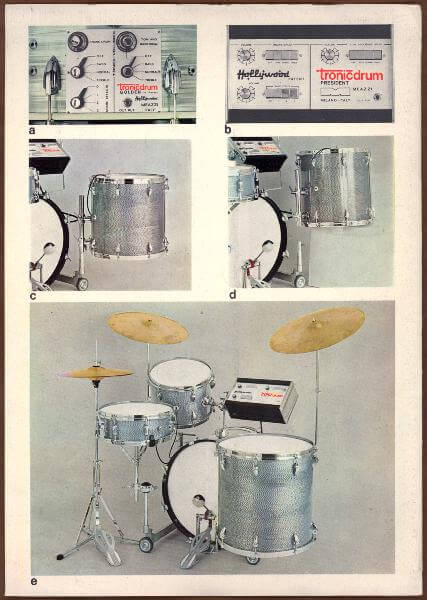
This is the first time electronic components were added to an acoustic drum set – but didn’t use power. How? The entire unit relied on passive pickups.
For any tech geeks reading this, here’s how the original Tronicdrum patent describes the process:
“The vibrations of a drum diaphragm are picked up and amplified by magnetic material vibrating with the diaphragm and co-operating with an electromagnet. In one embodiment, a plate of magnetic material is attached to the center of the diaphragm of the drum and is arranged to co-operate magnetically with a coil, which is connected through leads to an amplifier. A magnetic shield is arranged around the coil with the electromagnet assembly being attached to the side of the drum by a support.”
Meazzi Hollywood released a third model in 1970 – the Max Roach Tronicdrum – where they mounted the module on the right side of the kit.
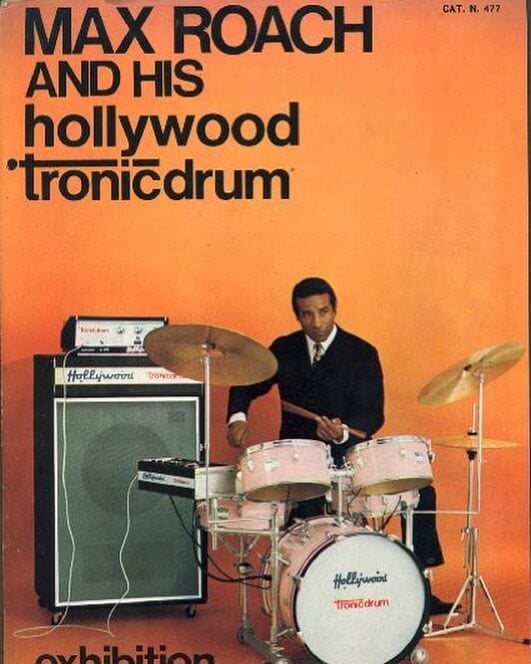
These drums came out before the days of headphone jacks and in-ear monitors, so drummers had to rely on a full-size speaker to broadcast and hear the amplified sounds (just like guitarists, when you think about it).
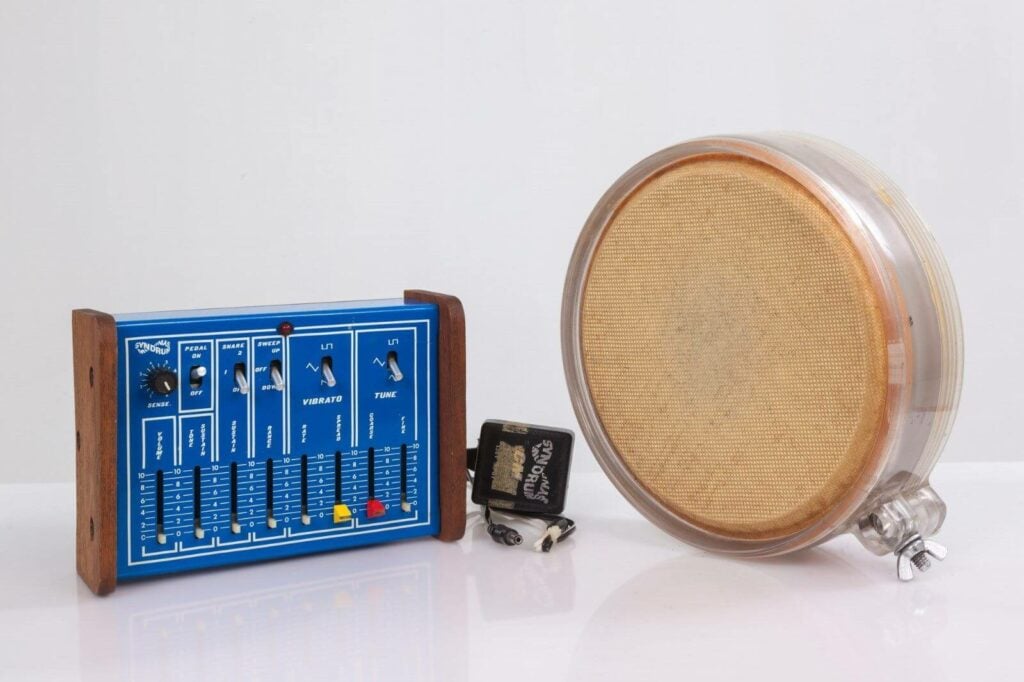
In the early 1970s, Graeme Edge (drummer of The Moody Blues) teamed up with Sussex University professor, Brian Groves to create the first fully electronic drum. It had a rubber control panel, touch-sensitive triggers, and hundreds of transistors. You can hear this drum on the Moody Blues song, “Procession” from 1971.
Around this time, many bands were starting to incorporate synths into their music, like The Who, Pink Floyd and Rush.
But it was one particular set of electronic drums, released in the late ’70s, that threw the music industry for a loop. Developed by session drummer Joe Pollard (of LA’s famous Wrecking Crew) and synth builder Mark Barton, the Syndrums were the first commercially available electronic drums in the U.S. and they quickly became popular in the rock and roll scene.
For the first time in history, drummers could access 100% electronic sounds by striking a pad.
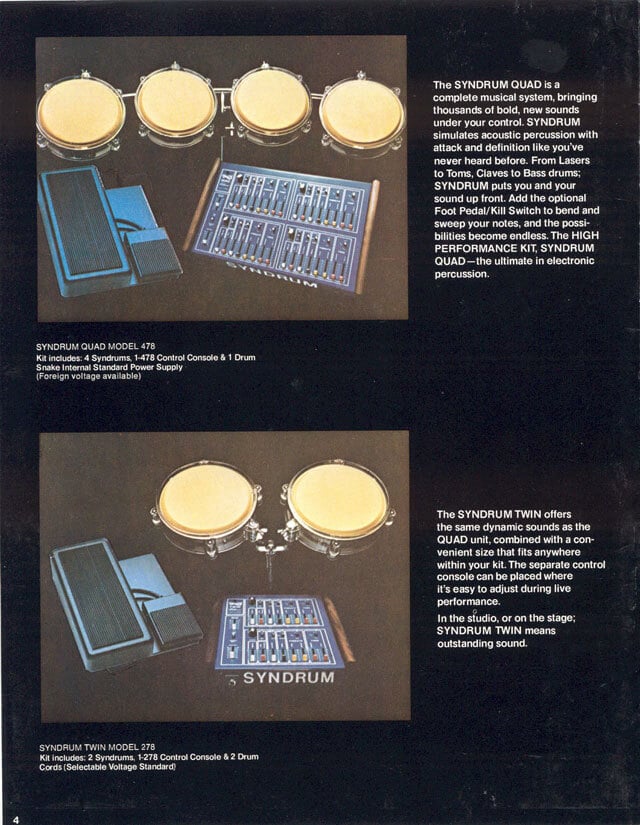
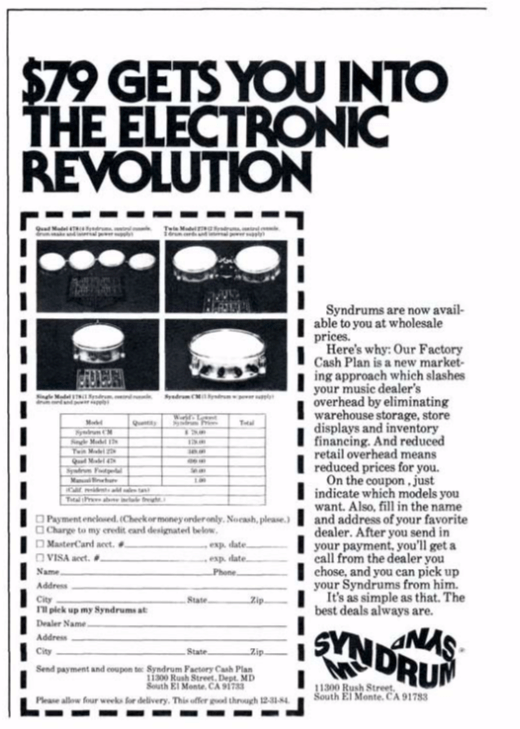
Pollard’s main requirement of Barton was that he wanted to be able to “strike the head and get tone.” The Model 477 – consisting of four drum pads with Kevlar drum heads – came with a module where each channel had a full range of tone, sustain, pitch bend, and noise controls. It had no digital components. The vibrato features were cool, but the pitch-dropping sine wave was the sound that caught people’s attention in particular.
When it came out in 1977, the Syndrums sold for $2000 USD. That’s equivalent to about $9150 today – a price tag you’d think would make this a pretty exclusive item.
But Pollard released the 478 Syndrum Quad (updated with a new module and footswitch) in 1978 alongside the 278 Twin (a two-drum version) and the 178 model with a single pad. There were now several options for upgrading or downsizing the setup, which meant more ways for drummers to incorporate electronic sounds into a hybrid drum kit.
Drummers like Steve Gadd, Peter Erskine, and Jeff Porcaro used Syndrums at the height of their popularity. But they only sold about 600 units in their first year – and by 1983, a single Syndrum was being sold for only $79 USD, about $200 today.

Star Instruments developed an electronic pad that wasn’t just more intuitive than the Syndrums – it was also completely portable.
After releasing two products called the Synare 1 and the Synare 2, Star’s third iteration – the Synare 3 – became the gold standard in electronic drums when it went to market in 1979.
Also known as the PS-3, the Synare 3 was an 8-inch, pressure-sensitive pad that offered a tight, studio-ready sound at the strike of a drumstick (or touch of a hand). One selling point for studio drummers and producers was that it could be patched directly into the line for recording – a DI drum!
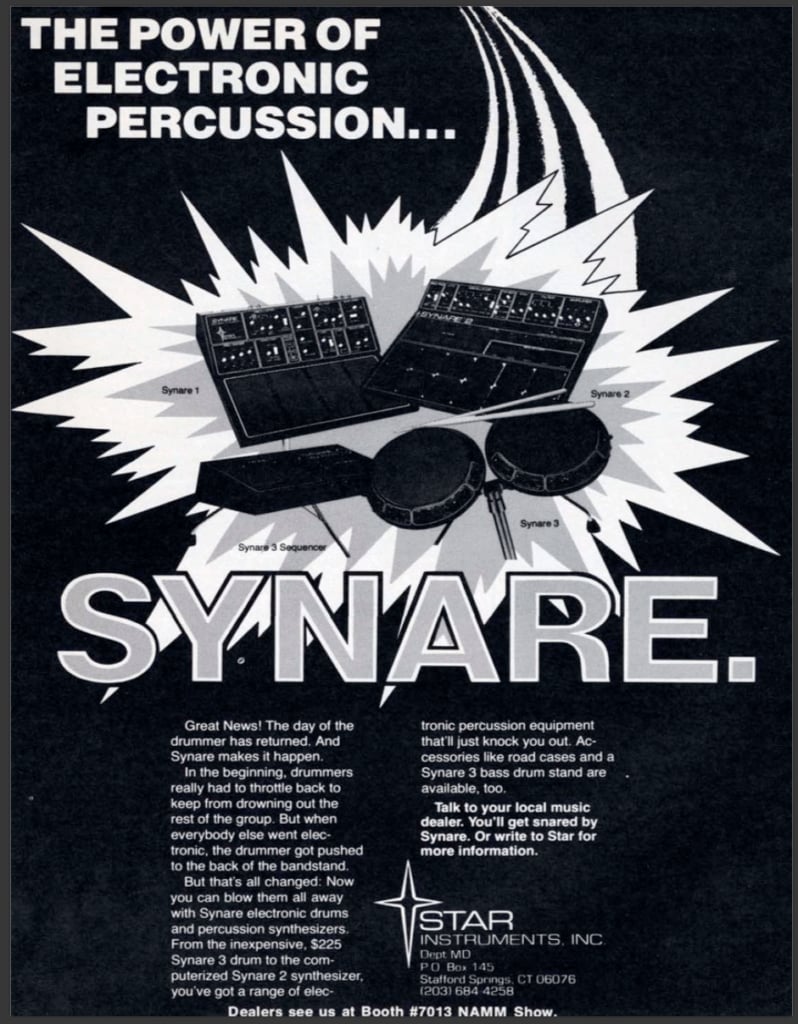
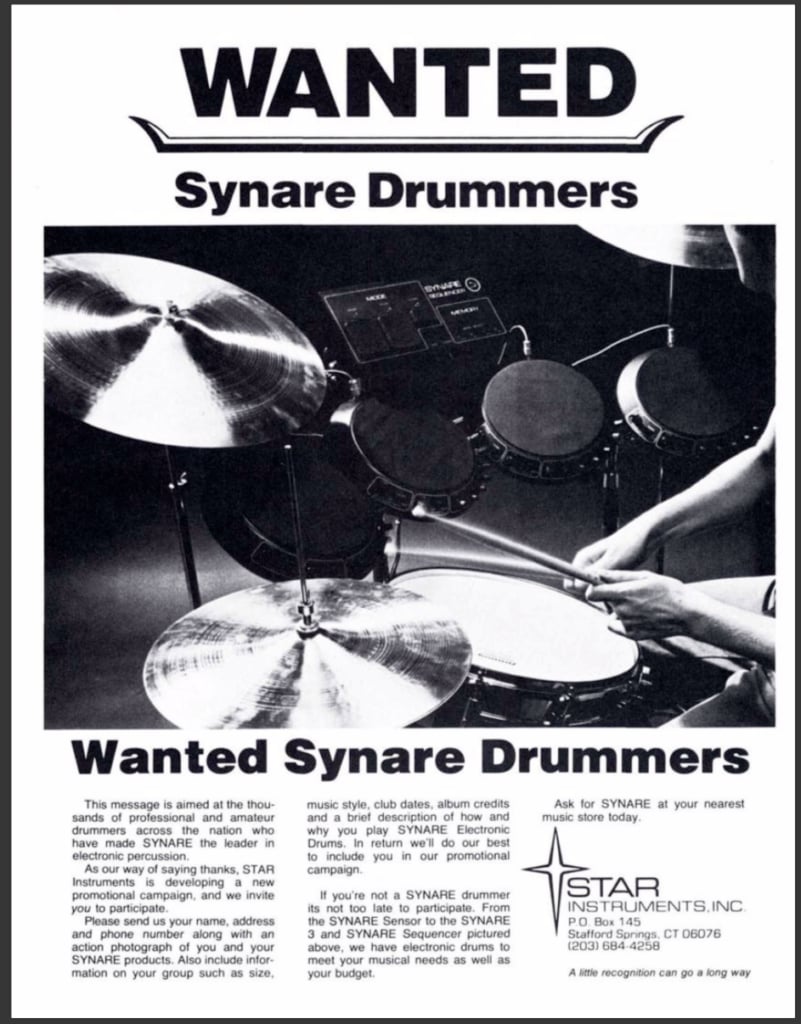
From its module, an oscillator could produce pulse and sawtooth waveforms and generate white noise, among other features. Knobs controlled decay, resonance, tune, sensitivity, sweep and more.
Designed to be mounted on a tom stand or mounted vertically in front of a pedal, the Synare 3 had another unique feature: it was powered by two 9-volt batteries.
The Synare 3 initially sold for $225 USD, equivalent to about $800 today. At a lower price point than the Syndrums, it was even more widely accessible as an add-on or replacement to a traditional drum kit. Drummers from bands like The Cars, The Cure, and Devo were Synare diehards. Star Instruments also made Synare Tympanis, which Ian Wallace (King Crimson) used to wire together with Simmons pads.
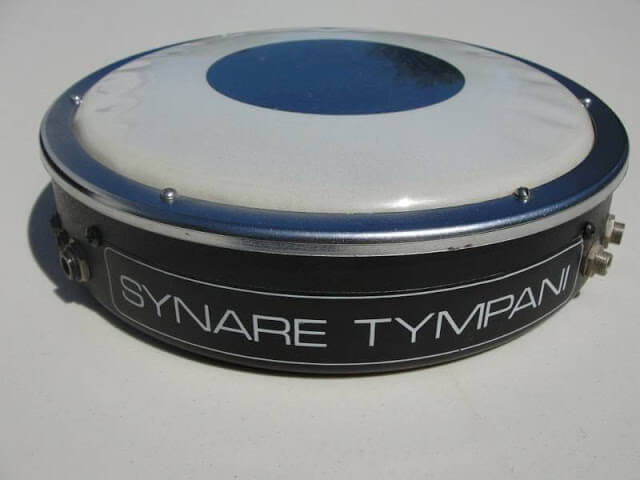
With drum machines and synths dominating new wave and synth-pop in the late ’70s and early ’80s, the industry was ripe for innovation in electronic drumming – and it was about to get a lot more interesting.
That’s it for now! We hate to leave you hanging, so if you want to see the rest of this documentary series, try Drumeo free for 7 days and get access to The History Of Electronic Drums, other drum videos and courses, live Q&As, song tutorials and more!
Drumeo Team - We're professional, award-winning drummers and drum teachers, coaches, recording artists, and content specialists who are passionate about drums and helping drummers around the world. This post was written and/or edited by Sam Landa, Brandon Toews, Jared Falk, Dave Atkinson, or another pro on our team (which has a combined 1000+ years of drumming experience). Are you looking for inspiration, education, and support to take your playing to the next level? Join the Drumeo community today!


By signing up you’ll also receive our ongoing free lessons and special offers. Don’t worry, we value your privacy and you can unsubscribe at any time.
We use cookies for traffic data and advertising. Cookie Policy »